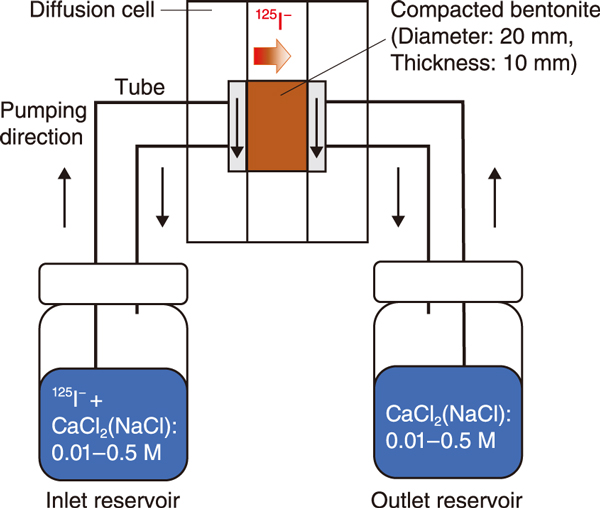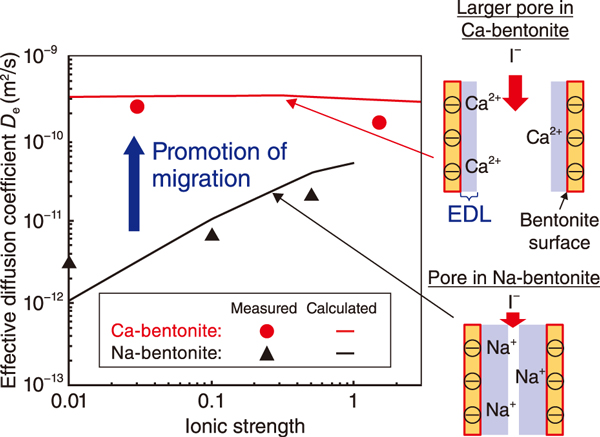
Fig.1 Schematic illustration of a diffusion test

Fig.2 Measured De of 125I- in Na- and Ca-bentonite (dry density = 0.8 Mg/m3) and evaluation by a diffusion model
In the geological disposal of high-level radioactive waste, compacted Na-bentonite is placed around the vitrified waste as a buffer material. When Na-bentonite comes in contact with groundwater, it swells and forms a microstructure with micropores, thereby effectively inhibiting radionuclide migration. However, the Ca2+ in groundwater leached from cement materials, which are used as repository components, can possibly be exchanged with the Na+ in bentonite, transforming Na-bentonite to Ca-bentonite. This alteration may reduce the ability of the buffer to inhibit radionuclide migration, because Ca-bentonite has large pores as it has a poor swelling property.
In this study, tests were conducted to study the diffusion of radioiodine (125I-) in Na- and Ca-bentonite (Fig.1). The effective diffusion coefficient (De), which indicates the diffusion rate of radionuclides, was obtained. The impact of alteration from Na-bentonite to Ca-bentonite on radionuclide migration was investigated by comparing the De values in Na- and Ca-bentonite. We also evaluated the effect of ionic strength, which is promotional to the Ca2+ or Na+ concentrations, in the pore water on De. Using these results, we developed an evaluation model for De values under a variety of groundwater conditions.
Fig.2 shows De values of 125I- for Na- and Ca-bentonite obtained by diffusion tests. As shown in the figure, the De of 125I- is higher in Ca-bentonite (● in Fig.2) than in Na-bentonite (▲ in Fig.2), indicating that the migration of 125I- is enhanced in Ca-bentonite. With regard to the dependence of De on ionic strength, the De of 125I- in Na-bentonite tended to increase with increasing ionic strength (▲ in Fig.2). In contrast, the De of 125I- in Ca-bentonite hardly affected by ionic strength (● in Fig.2).
These results can be explained by the difference in pore size between Na- and Ca-bentonite and the formation of the electric double layer (EDL) by the negative charges on the bentonite surface. Anions such as 125I- are electrically excluded from the EDL. As the thickness of EDL decreases with increasing ionic strength, the fraction of pore space available for anion migration increases, leading to an increase in De. However, in Ca-bentonite, the large pores result in a smaller EDL-total pore space ratio (Fig.2), and hence, the migration pathway for anions is larger than that in Na-bentonite. Thus, ionic strength has less influence on De in the case of Ca-bentonite than in the case of Na-bentonite.
We developed a diffusion model that considers the large pores and EDLs that are characteristic of Ca-bentonite and evaluated the De of 125I- (the solid line in Fig.2) using this model. As shown in the figure, the model mostly reproduced the experimental values of ionic strength. Thus, this model can evaluate the De values and is particularly applicable for evaluating the differences in De value caused by a transformation from Na-bentonite to Ca-bentonite. De is an important parameter for predicting radionuclide migration in the safety assessment of geological disposal. The knowledge obtained in this study will contribute to improving the reliability of setting De for compacted bentonite.
(Yuta Fukatsu)
<Previous: 9-5 | Next: 10 Steadily Promote Backend Measures with the Highest Priority on Safety>